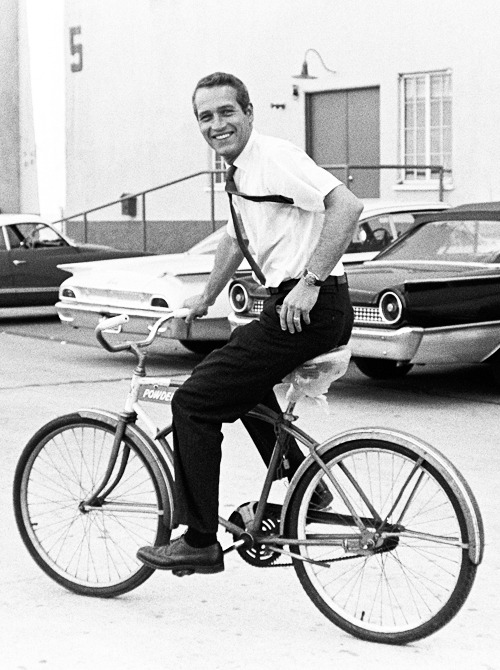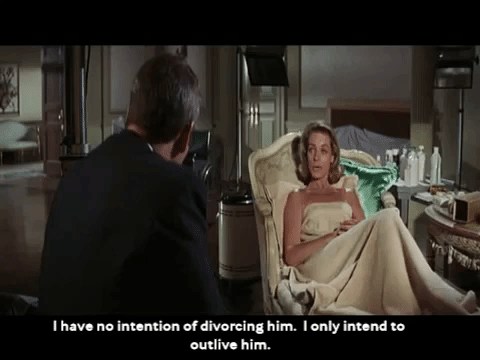Um fato pouco conhecido na
comunidade de cinema clássico é que eu queria ser detetive quando era criança.
OK, esse pode não ser um fato relevante para a comunidade de cinema clássico,
mas é importante para este artigo. Quando criança, minha única referência de
detetive era Sherlock Holmes. Conforme eu cresci, eu conheci Philo Vance e Nick
Charles, ambos interpretados por William Powell. Os anos 30 e 40 foram cheios
de detetives bacanas e, em meados dos anos 60, Hollywood decidiu que era hora
de trazer de volta estes detetives bacanas. E Paul Newman foi o escolhido para
seguir as pistas, porque Newman é o epítome de tudo que é mais bacana.
A little
known fact in the classic film community is that I wanted to be a detective
when I was a child. OK, this may be irrelevant information for the classic film
community as a whole, but it is important for this post. As a kid, my only
detective reference was Sherlock Holmes. As I grew up, I got to know other cool
sleuths, like Philo Vance and Nick Charles, both played by William Powell. The
1930s and 1940s were full of cool detectives, and when the mid 1960s came,
Hollywood decided it was time to bring back cool detectives. And Paul Newman
was chosen to follow clues, because Newman is the epithome of cool.
Lew Harper (Paul Newman) não é um
detetive comum. Para começar, ele vive em seu escritório em um prédio
comercial, dormindo e preparando refeições em um combo improvisado de cama /
cozinha / mesa de trabalho. Ele não é particularmente atlético, sedutor ou
sortudo. Ele não tem aparelhos mirabolantes e algumas vezes ele perde
oportunidades e escapa por pouco da morte com ajudas improváveis – às vezes,
até o público é mais esperto que ele. E ele é um palhaço. É como se Paul
Newman, um conhecido piadista, tivesse se tornado detetive!
Lew Harper
(Paul Newman) is not a common detective – if there ever was one in fiction. To
begin with, he lives in his office in a commercial building, sleeping and
preparing meals in an improvised bed / kitchen / desk combo. He is not
particularly athletic, seductive or lucky. He does not have gadgets and
sometimes he misses opportunities and narrowly escapes death with improbable
help – sometimes, even the audience outsmarts him. And he's goofy. It's like
Paul Newman, a huge prankster, became a detective!
Harper é chamado para solucionar o
desaparecimento de Ralph Sampson, um homem rico e mentalmente instável, cuja
paranoia faz com que seja impossível a família envolver a polícia no caso. E
“família” é um termo não muito correto para estes tipos: temos Elaine Sampson
(Lauren Bacall), a esposa que de fato chamou Harper, Miranda (Pamela Tiffin), a
filha do Sr Sampson de um casamento anterior, e Alan (Robert Wagner), o jovem
piloto que mora na casa dos fundos.
Harper is
called to solve the disappearance of Ralph Sampson, a rich and mentally
unstable man whose paranoia makes it impossible for his family to call the
police when he goes missing. And “family” is a nice way of putting it: we have Elaine
Sampson (Lauren Bacall), the wife who effectively called Harper, Miranda
(Pamela Tiffin), Mr Sampson's daughter from a previous marriage, and Alan
(Robert Wagner), the young pilot who lives in the back house.
Eles começam a investigar em Los
Angeles, onde Ralph foi visto pela última vez. Lá, Harper conhece uma ex-atriz
que Ralph costumava encontrar, Fay Estabrook (Shelley Winters), uma pianista de bar que tem
problemas com drogas, Betty Fraley (Julie Harris) e outras figuras estranhas.
Completando o caso, há astrologia, um guru com um templo no topo de uma montanha,
e contratação ilegal de mão de obra estrangeira. Ah, e também há o amigo
advogado de Harper, Albert Graves (Arthur Hill), que é apaixonado por Miranda
mas não sabe como conquistá-la. Sim, é uma grande bagunça.
They start
investigating in Los Angeles, where Ralph was last seen. There, Harper meets a
former actress who Ralph used to see, Fay Estabrook (Shelley Winters), a piano
player from a bar who has some problems with narcotics, Betty Fraley (Julie
Harris) and other odd figures. To complete the case, there is astrology, a guru
with a temple on the top of a mountain and illegal foreign workers. Oh, and
there is also Harper's lawyer friend, Albert Graves (Arthur Hill), who is in
love with Miranda but doesn't know how to conquer the girl. Yes, it's a complete mess.
Mesmo com a trama complicada, o
filme é bem divertido. Os anos 60 foram provavelmente a década com os filmes
mais divertidos – e não estou falando das comédias mais engraçadas. Mesmo os
filmes ruins dos anos 60 nos divertem. Toda a atmosfera da década é divertida:
a arquitetura e decoração, as roupas, as músicas em especial, e as atuações.
“Harper” tem de tudo, com destaque para as muitas frases irônicas proferidas
pelo protagonista.
Even if
the plot is so complicated, the film is too much fun. The 1960s were probably
the decade in which the funniest movies were made – and I'm not talking about
the funniest comedies. Even the bad 1960s movies are fun to watch. The whole
1960s atmosphere is fun: the architecture and decoration, the clothes, the
songs in particular, and the performances. “Harper” has it all, and also many
funny lines spoken by the lead.
A enteada Miranda diz que Elaine
“não é mais uma grande beldade” - e eu discordo. Aos 42 anos, Lauren Bacall
podia ser considerada “madura” para os padrões de Hollywod, mas ela nunca
deixou de ser bela, porque ela tinha mais do que beleza: ela tinha classe.
Mesmo quando jovem – ela tinha só 19 quando filmou “Uma Aventura na Martinica”
(1944) – ela já possuía esta classe que a fazia brilhar.
The stepdaughter
Miranda says about Elaine: “she's not a raving beauty anymore” - I choose to
disagree. At 42, Lauren Bacall could be considered “mature” for Hollywood
standards, but beauty is something she never lost, because she had more than
beauty: she had class. Even as a young woman – only 19 when filming “To Have
and Have Not” (1944) – she already possessed this class that made her glow.
Em “Harper”, Lauren Bacall é quase
desperdiçada, aparecendo apenas em algumas cenas e só sentada, porque sua
personagem havia sofrido um acidente andando a cavalo. Isso pode não ser muito
legal – especialmente se considerando que Paul Newman, o protagonista, era
apenas um ano mais novo que Bacall – mas há uma razão. “Harper” queria fazer
uma homenagem aos filmes de detetive de Humphrey Bogart, em especial “À Beira
do Abismo” (1946). Nele, o homem que contrata Phillip Marlowe, o Sr Sternwood,
está numa cadeira de rodas, assim como a personagem de Bacall em “Harper”.
In
“Harper”, Lauren Bacall is nearly wasted, appearing in a few scenes and only
seated, because her character had suffered a horseback riding accident. This
may not be very nice – especially considering that Paul Newman, the lead, was
only a year younger than Bacall – but there is a reason. “Harper” wanted to pay
tribute to Humphrey Bogart’s detective films, in special “The Big Sleep”
(1946). In it, the man who hires Phillip Marlowe, Mr Sternwood, is in a
wheelchair, just like Bacall’s character in “Harper”.
E já
que estamos falando sobre beldades, precisamos falar sobre Shelley Winters. Sua
personagem é uma ex-atriz que abandonou a carreira após engordar, e por causa
disso ela é vista como uma criatura ridícula que só serve para fazer rir. Na
vida real, a carreira de Shelley pode ser dividida em duas fases, e em ambas
ela fez mais papéis coadjuvantes que principais. Ela teve dificuldades na
primeira fase por ser considerada “vulgar demais” para papéis importantes, e
por isso só conseguiu papéis menores, porém vitais para os filmes em que apareceu.
A segunda fase começa com “O diário de Anne Frank” (1959), pelo qual ela ganhou
o Oscar de Melhor Atriz Coadjuvante, e nessa fase, com o ganho de peso, ela se
especializou em papéis de matrona, bêbada ou cômica.
And since
we're talking about beauty, we need to talk about Shelley Winters. Her
character is a former actress who lost her career as she got fat, and because
of it she is played as a ridiculous thing to be laughed at. In real life,
Winters's career can be divided in two phases, both more as a supporting actress
than a lead. She struggled in the first phase, because she was considered “too
vulgar” for big roles and got only smaller, yet important, ones. The second
phase begins with “The Diary of Anne Frank” (1959), for which she won the Best
Supporting Actress Oscar, and in this phase, as she gained weight, she became a
character actress specialized in drunk, reckless, fun or matronly roles.
E temos
outra mulher em “Harper” que ainda não foi mencionada: Janet Leigh interpreta
Susan, a esposa que Lew Harper, que quer o divórcio, mas Harper não assina os
papéis. Susan não tem muita serventia no filme – talvez ela esteja lá para
conferir um passado mais humano para Harper – e o problema do divórcio nunca é
resolvido. Eu tenho a impressão de que a ideia original era iniciar uma série
de filmes de Harper – no modelo James Bond – mas apenas uma sequência foi
feita, em 1975: “A Piscina Mortal”.
And we
have another woman in “Harper” that wasn’t mentioned yet: Janet Leigh plays
Susan, Lew Harper’s wife who is seeking a divorce, but Harper won’t sign the
papers. Susan doesn’t really have a reason to exist in the film – maybe she is
there to give a more human past to Harper – and their divorce situation is
never really solved. I have the impression the original idea was to start a
Harper series of films – like the Bond series – but only a sequel was made, in
1975: “The Drowning Pool”.
“Harper”
é divertido principalmente por causa do roteirista William Goldman, que faz sua
estreia sozinho aqui. Goldman escreveria o roteiro de muitos outros filmes,
como “Butch Cassidy” (1969) e “Todos os Homens do Presidente” (1976). E “Harper”
funciona também por causa de Paul Newman, um ator muito talentoso e BACANA. Eu
não tenho uma vontade maior de ser detetive agora porque fui inspirada por
Harper. Mas eu espero que todos que virem “Harper” se sintam ao menos
inspirados a tentar ser tão bacana quanto Paul Newman – se isso foi possível.
“Harper”
is funny mainly because of screenwriter William Goldman, making his debut solo
here. Goldman would go on to write screenplays for many films, like “Butch
Cassidy and the Sundance Kid” (1969) and “All the President's Men” (1976). And
“Harper” works also because of Paul Newman, a very talented and COOL actor. I'm
not now more inclined to be a detective than I was before because I was
inspired by “Harper”. But I hope everybody that sees “Harper” gets inspired, at
least, to try to be as cool as Paul Newman – if this is even possible.
This is my contribution to the Second Lauren Bacall blogathon, hosted by Crystal at In the Good Old Days of Classic Hollywood.








It is fun the way Harper drops us off in the 1960s and leaves us there to find our way from there. I do wish they would have followed up with the series, but the best laid plans often go by the wayside.
ReplyDelete